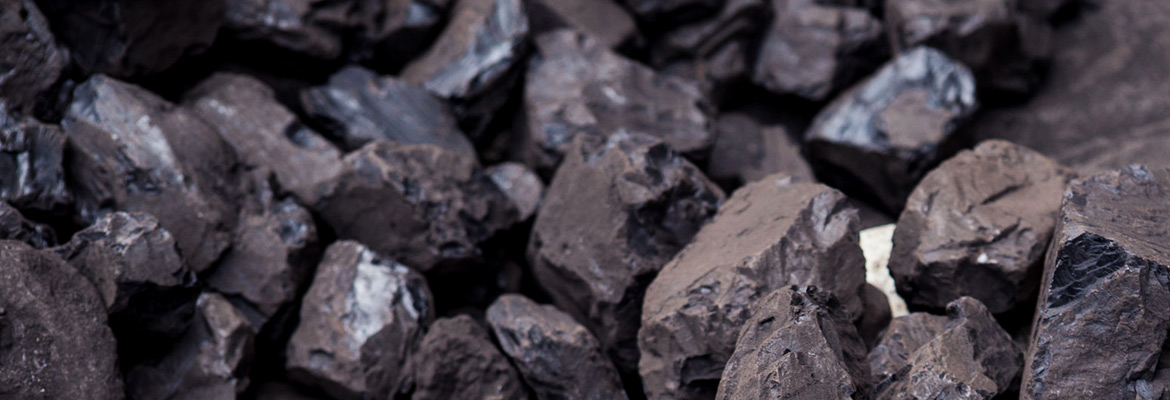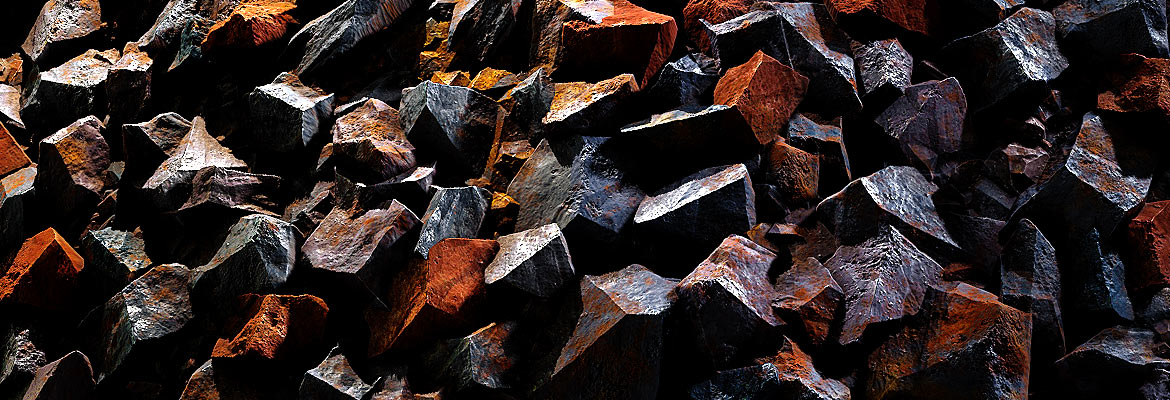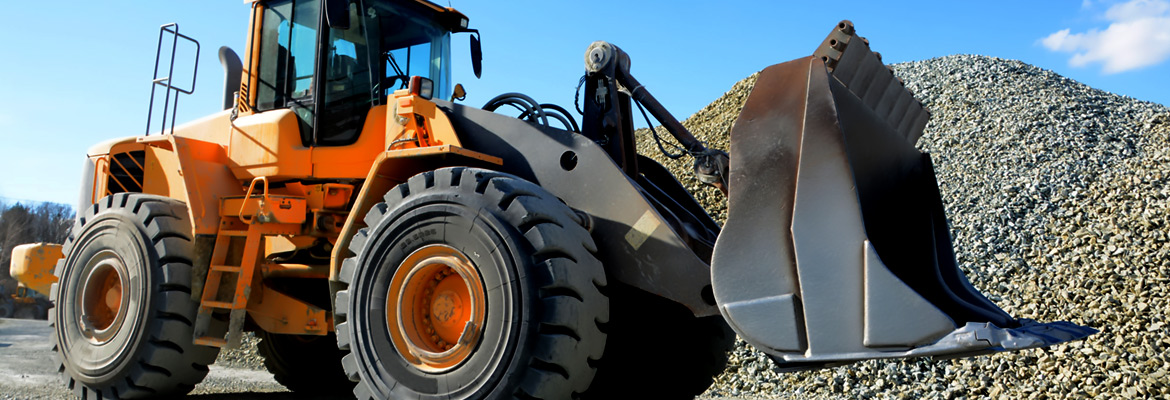CARBON & NONFUEL MINERALS
Most minerals are composed of metals but are also defined as an ore mineral that is mined and has commercial usage and value. They are used in multiple applications.
Carbon & Mineral Product Specifications

COAL
Coal is a combustible black (or brownish-black) sedimentary rock usually occurring in rock strata in layers or coal beds. It is the largest and most widespread fossil fuel resource providing 40 percent of the world’s energy.
View Grades Below:
The higher the number of Kcal the greater the amount of energy produced per Kg of thermal coal. Ash and sulfur content are other value drivers. The energy content of coal is measured in four different ways. Dried basis (db), Air Dried Basis (adb), As received basis (ar), Net as received basis (nar)
THERMAL COAL
US Thermal Coal: We can source high GCV Thermal coal directly from US Coal producers / suppliers
Northern coal: North Appalachia (NAPP)
- Average energy content of 10,300 to 13,500 BTU/ lb, Ash (<10%)
- Sulfur content of 0.8% to 4.0%
- Pennsylvania, Ohio, N-WV ( Both Thermal & Met Coal supply regions)
- Primary Port of Export, Baltimore, Maryland
llinois Basin (ILB) / Midwest
- Average heating content : 10,100 to 12,600 BTU/ lb
- Sulfur content of 1.0% to 4.3%. (Generally higher sulfur levels in ILB & NAPP coals)
- Illinois, Indiana, W-KY ( mainly Thermal coal)
- Primary Port of Export USGC – NOLA
U.S Western Coal :
- Powder River Basin: PRB – MT, WY ( Mostly Sub-Bituminous & some Bituminous Thermal coal of average 11,000 Btu/ lb)
- PRB Quality range : S. Bituminous 8000 Btu/lb – 9500 Btu/ lb, low ash (<10%) & low sulfur content (≤ 0.5%)
- Rocky Mountain: CO, UT, MT ( Thermal Coal supply regions)
- PRB – Primary port of Export is through Westshore Terminal (port of Vancouver, BC, Canada) & Ridley
- RM – Primary Port of Exports USWC & Sonora, Mexico (Guaymas)
** Specific U.S. coal grades & custom blends can be sourced according to your requirement. Contact Us.
Australian Thermal Coal:
- Australian thermal export coal benchmark – 6000 kcal, 12-14% ash content.
- Australian thermal export coal secondary benchmark – 5500 kcal, 20% ash content.
- Major markets for Australian Thermal Coal are Japan, China, S.Korea, Taiwan, Malaysia and India.
**Contact Us about your specific requirement of Australian Thermal Coal
Indonesian Thermal Coal:
- Thermal coal from Indonesia mostly has high moisture, low sulfur and ash content compared to coals from other regions.
- Bituminous ( >5400 Kcal/kg GAR basis), S. Bituminous (>4600 to 5400 Kcal/ kg GAR), Lignite / low rank ( <4600Kcal/Kg gar)
- Majority of coal is of low calorific value between GAR 4000 Kcal and 6200 Kcal/kg, 2-10% ash content.
- High calorific value coals between GAR 6100 to 6700 Kcal/kg are available but the bulk shipped out of Indonesia are of low calorific value.
- Major markets for Indonesian coal are Japan, China, South Korea and India.
**Kiruba Corp can source Indonesian Thermal Coal from different producers / suppliers
**Contact Us about your specific requirement of Indonesian Thermal Coal.
Coking coals are primarily used to make coke which under high temperatures reduces metal oxides to metal.
- Met coal has a particularly high BTU, but low ash content.
- Quality characteristics important in Met coal are sulfur, ash, volatility, and fluidity.
- level of impurities affects coke quality, composition affects coke strength, volatility affects coke yield.
- Met coal when coked, that achieves a low CRI value and a high CSR value is highly regarded in the market, primarily because this test has been related to blast furnace performance, particularly fuel rate and permeability of the burden.
Central Applachia: CAPP
- S-WV, TN, E-KY, Virginia ( Primarily Met but some Thermal)
- Major port of export – Port of Hampton Roads
Southern Applachia: SAPP
- AL ( Met Coal)
- Primarily High Quality Metallurgical Coals
- Port of Export, Mobile, AL
**Contact Us for your Metallurgical ‘Coking’ Coal needs.
- High percent Fixed Carbon and low percent sulfur makes it a useful carbon source for metal applications.
- Less volatile matter than Bituminous coal and the heat content range is over 14,000 BTU /lb.
- 8 sizes are of interest to the steel industry.
- Calorific value 8000-8600 Kcal/ kg(AR) for low volatile coal
- Fixed carbon content 92 – 98% on a dry mineral-matter free basis (ASTM)
- Volatile content 5 -9%
- Sulfur 0.5% to 1%
- Primary supply source: Northeast, PA
**We can source Anthracite Coal directly from producers / suppliers in the United States.
Gross & Net Calorific Values ( Used as a benchmark of Quality & Economic value for coal mined for combustion applications )
- Gross CV or ‘higher heating value’ (HHV) is the CV under laboratory conditions.
- Net CV or ‘lower heating value’ (LHV) is the useful calorific value in boiler plant.
- The difference is essentially the latent heat of the water vapour produced.
Conversion: Calorific value can be measured in standard English units (Btu/lb) or in Metric units (kilojoules/kg or megajoules per kg).
- From Btu/lb to MJ/kg multiply Btu/lb by 0.002326
- From MJ/kg to Btu/lb multiply MJ/kg by 429.9
- From Kcal/kg to Btu/lb multiply by 1.79957
- From Btu/lb to Kcal/ kg divide by 1.79957
- To Calculate Btu Dry Basis from as Received- Btu Dry Basis = Btu/lb as received ÷ (1 -% M)
- To Calculate Btu As received from Dry Basis- Btu As Received = Btu/lb dry basis x ( 1- % M)

IRON ORE
Iron ores are rocks from which metallic iron can be economically extracted and used to make ‘pig iron’, which is one of the main raw materials to make steel. In fact, some estimate up to 98% of mined iron is used for making steel.
Kiruba Corp can source a range of Iron ore products and grades, including low grade and high grade lumps, fines, pellet feed and pellets through our network of mineral suppliers from South Africa, Australia, Mexico to India.
View Specs:
There are several variations of these products, such as: lumps, fines, concentrate, pellets and sinter, however, all are considered usable ore.
DESCRIPTIONS:
- Lumps: Lump is the natural – 30mm x +6mm fraction of iron ore that is produced predominantly from Direct Shipping Ore (DSO = ore that is mined and crushed and screened, only, before being sold).
- Fines: High quality fine ore powders, are known as Fines. It is a result of taking lower-grade sources of iron ore that generally require beneficiation, using techniques such as milling or heavy media separation, (and many others) that improve the concentration of the ore and remove impurities.
- Concentrates: Iron ore concentrate is used as a metallurgic raw material in iron smelting. Iron ore concentrate recovery is based on magnetic beneficiating methods. Produced by open-cast mining.
- Pellets: Iron ore pellets are spheres of typically 6–16 mm (0.24–0.63 in) to be used as raw material for blast furnaces. They typically contain 67%-72% Fe and various additional material adjusting the chemical composition and the metallurgic properties of the pellets. Pellets are essentially artificial lump.
- Sinter: Iron ore sinter or is usually the major component of a blast furnace iron bearing burden material. Sinter normally consists of various mineral phases produced by sintering of iron ore fines with fluxes, metallurgical wastes and a solid fuel.

LIMESTONE
Limestone is an important industrial mineral. Its chemical properties make it a valuable mineral for a wide range of industrial / manufacturing uses with its primary use is in purifying steel where it serves as a flux for removing impurities (silica, alumina, phosphorus, and sulphur) during refining of steel.
Contact us for other specification not listed here.
We can source Quicklime, Hydrated Lime & Dolomitic Lime products from producers worldwide.
Quicklime, is the product of calcination of limestone, that consists of the oxides of calcium and magnesium. High calcium quicklime, Magnesian quicklime, Dolomitic quicklime are the different grades depending on the quality of limestone. Limestone (CaCO3) is quarried, crushed, washed and screened. The sized limestone is then calcined that results in the conversion of limestone (calcium carbonate) to quicklime (calcium oxide). The final product is further screened to offer various sized quicklime products.
“Limestone” – Calcium Carbonate (CaCO3) + Heat (1,648oF) = Quicklime (CaO) Quicklime, is commercially available in a number of sizes (the following definitions are derived from ASTM Standard C51)
- Large lump lime — a maximum of 8″ in diameter.
- Crushed or pebble lime — ranging from about ¼ to 2½ inches.
- Ground lime — ¼ inches and smaller.
- Pulverized lime — a typical size is substantially all passing a No. 20 sieve.
- Pelletized lime — one inch sized pellets or briquettes, molded from fines.
Contact Us about your specific Quicklime requirement.
Hydrated lime (calcium hydroxide) is the result of adding water to powdered quicklime.
Calcium Oxide (CaO) + H2o —> Calcium Hydroxide (Ca(OH)2) + Heat —> “Hydrated Lime”
Depending upon the type of quicklime used and the hydrating conditions employed, the amount of water in chemical combination varies, as follows:
High calcium hydrated lime — a hydrated lime generally containing
72 to 74 % calcium oxide ,
23 to 24 % chemically combined water.
Dolomitic hydrated lime (normal) — a hydrated lime of generally the following chemical composition:
46 to 48 % calcium oxide,
33 to 34 % magnesium oxide,
15 to 17 % chemically combined water.
Dolomitic hydrated lime (pressure) — this lime is produced from dolomitic quicklime under pressure, producing generally the following chemical composition.
40 to 42 % calcium oxide,
29 to 30 % magnesium oxide,
25 to 27 % chemically combined water.
Contact Us about your specific hydrated lime requirement.
ASTM has Standard Methods for testing chemical (C25) and physical (C110) properties of Lime.
APPLICATIONS:
It is normally used in three forms.
- Raw limestone which is also the natural form of limestone (CaCO3)
- Calcined limestone or quicklime(CaO) or simply lime
- As hydrated lime.
When used as a fluxing agent it is used as either raw limestone or as calcined limestone.
Main uses of limestone (CaCO3) in the steel industry are:
- As a fluxing agent in the Electric Arc Furnace ( EAF).
- In a Basic Oxygen Furnace (BOF) phosphorus, silica are removed from liquid pig iron.
- As well as in Secondary refining.
Quicklime is used in slag formation and also acts as an insulator to help maintain high temperatures. When added to metal, Quicklime is used to extract the phosphorus in the steel.
Limestone is the main raw material for clinker & an additive ingredient for cement.
Cement is a manufactured product made by blending different raw materials and firing them at a high temperature (2,700 degrees Fahrenheit ) in order to achieve a finished product known as cement clinker. Clinker comes out of the kiln as grey balls, about the size of marbles. After the clinker is cooled, cement plants grind it and mix it with small amounts of gypsum and limestone to finally produce a product called Portland Cement.
The quality of the clinker is directly related to the chemistry of the raw materials used.
KEY FACTS
- Magnesia content in the limestone should ideally be less than 3%, although as high as 5 % MgO is used by the industry for clinker.
- Many producers favor a max of 3% MgO in the stone.
- Magnesia, sulfur and phosphorus are regarded as undesirable impurities.
- Dolomitic Limestone is ruled out for cement manufacture due to high content of MgO.
Typically 1.65 tons of Limestone (1.5 to 1.8) and 0.4 tons of clay are quarried for each ton of cement produced.
The optimum chemistry and purity of chemical grade limestone makes it ideal for flue gas de-sulphurization and steel making, both of which require exacting specifications.
Disclaimer:
The information contained herein is of a general nature and is for informational purposes only. Product specifications must in each case be expressly agreed upon in writing or may be provided by the respective company in a separate document which must be expressly related to a particular purchase order. Each buyer or seller is responsible for conducting its own tests to determine the chemical and physical characteristics of a product or its suitability for an intended purpose or use.
In no event shall Kiruba Corporation be liable to any buyer or seller of the products for any loss or damages, direct or indirect, of any kind or nature (including general, special, incidental, consequential, liquidated, or punitive damages or any damages calculated by reference to loss of anticipated revenues or profits, or loss of use of products, costs of replacement products, or additional expenses incurred in the use of products), or for any other damages to the property or person of any buyer or seller, in each case which may arise as a result of the use or application of the products described herein or the information provided by any company negligently or otherwise, or the infringement of any patent, trademark or other intellectual property rights.
This document does not supersede or modify any legal requirements, and it is not a binding standard or specification. Kiruba Corporation does not intend to infringe on any patent or other intellectual property right or induce any other party to do so, and thus users of this document are responsible for determining whether any method, technique, or technology described herein is protected by patent or other legal restriction.
START TODAY
Let us be your connection to the best resources of Mineral & Carbon product suppliers.
Kiruba Corp connects America’s most reliable Mineral suppliers and global buyers together. Our team saves you time, money and aggravation by facilitating international business connections that are efficient, ethical and professional.

